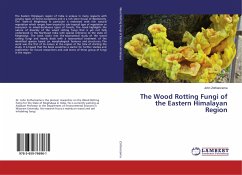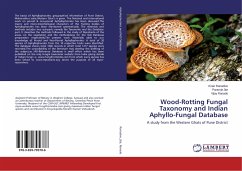Sandalwood (Santalum album L.) is a small evergreen tree attaining a height of 12 to 15 metres and a girth of 1 to 2.4 metres with slender drooping as well as erect branching. This plant has been rendering its performance properly for the sake of human beings since ancient time of civilization. There was no existence of sandal plant in West Bengal in national map. Recently, Das and Tah (2014) reported its existence in West Bengal in an international forum. A few plants were grown by forest executive, probably, in undivided Bankura Forest Division. It was felt by present workers that there are certainly some scientific lacuna for its seed propagation and also adaptation due to specific edaphic factors and less germination percentage. Keeping all these views in mind, this venture was undertaken to find out any reason behind this problem.
Bitte wählen Sie Ihr Anliegen aus.
Rechnungen
Retourenschein anfordern
Bestellstatus
Storno








